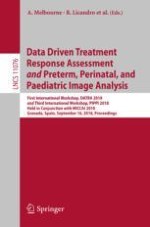2018 | Buch
Data Driven Treatment Response Assessment and Preterm, Perinatal, and Paediatric Image Analysis
First International Workshop, DATRA 2018 and Third International Workshop, PIPPI 2018, Held in Conjunction with MICCAI 2018, Granada, Spain, September 16, 2018, Proceedings
herausgegeben von: Andrew Melbourne, Roxane Licandro, Matthew DiFranco, Dr. Paolo Rota, Melanie Gau, Dr. Martin Kampel, Rosalind Aughwane, Pim Moeskops, Ernst Schwartz, Emma Robinson, Antonios Makropoulos
Verlag: Springer International Publishing
Buchreihe : Lecture Notes in Computer Science
